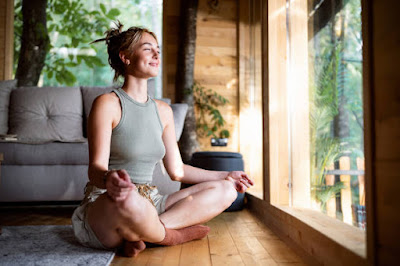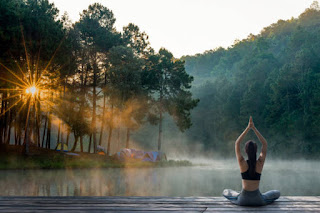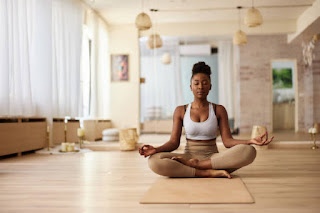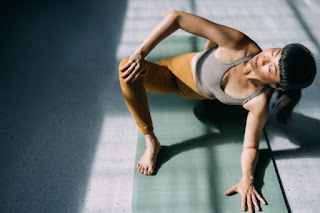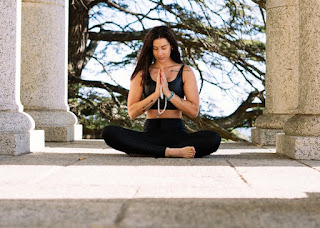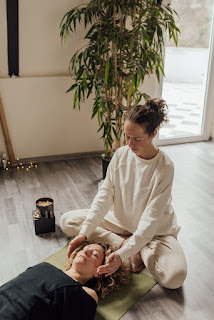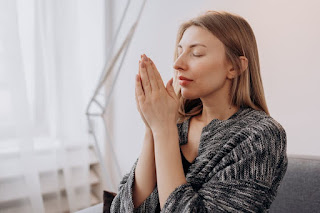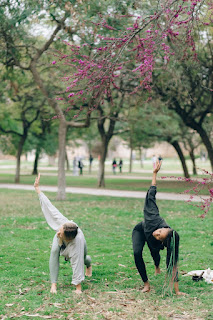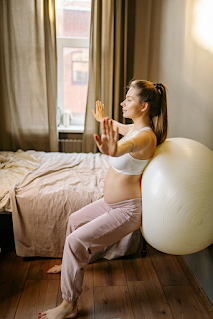Stick-with-It Yoga: 3 Tips for Newbies
Tried a yoga class and felt uncomfortable, wobbly, or just plain lost? You’re not alone—starting a yoga journey can feel daunting for yoga beginners. But here’s the good news: with the right yoga tips, that first class can turn into a regular yoga practice that brings stress relief, inner peace, and even a more purposeful life. Whether you’re unrolling a yoga mat for just one session or dreaming of a daily yoga practice, these three essential tips will help you stick with it. No fancy yoga studio or yoga pants required—just a willingness to breathe and begin. Let’s get started.
Introduction to Yoga
Yoga is a physical, mental, and spiritual practice that originated in India over 5,000 years ago. The word “yoga” comes from the Sanskrit word “yuj,” meaning “to unite” or “to join.” At its core, yoga aims to unite the body, mind, and spirit through various techniques such as postures (asanas), breathing exercises (pranayama), and meditation. This holistic practice can significantly enhance your physical health, mental well-being, and spiritual growth. With a regular yoga practice, you can experience increased flexibility, strength, balance, and coordination, as well as reduced stress, anxiety, and depression. Whether you’re stepping onto your yoga mat for the first time or looking to deepen your practice, yoga offers a path to a healthier, more balanced life.
Tip 1: Ease In with Beginner Yoga and Simple Poses
Starting yoga for beginners doesn’t mean mastering vinyasa yoga or ashtanga yoga right away. The best yoga for newbies is slow, simple, and forgiving—perfect for building confidence without overwhelm.
Yoga Tips
Forget the pressure to nail every pose in your first class. Yoga instructors often say it’s about progress, not perfection. Grab a yoga mat, maybe a yoga block or folded blanket, and focus on physical poses that feel good. These yoga tips are your foundation—start here, and you’ll be amazed at the huge difference a little consistency makes.
Beginner Yoga
Beginner yoga is all about ease. Styles like hatha yoga or restorative yoga move at a gentle pace, letting you explore postures without rushing. Many yoga studios offer beginner yoga classes—or try an online yoga class if stepping into a room full of yoga teachers and students feels intimidating. Researchers found (think International Journal vibes) that even short sessions improve posture and reduce stress hormones. So, unroll that mat and give it a go.
Child’s Pose
One of the easiest yoga poses to love is child’s pose, which serves as a foundational position providing a stretch for the lower back and hips, as well as acting as a resting pose to regroup during a yoga class. Kneel on your mat, bring your big toes together, sit back toward your heels, and stretch your arms forward or rest them by your sides. If your right knee or hips feel tight, slide a folded blanket underneath. This ancient practice calms the mind—perfect for stress relief after a long day. Yoga instructors call it a reset button; you’ll feel the benefits instantly.
Mountain Pose
Stand tall in mountain pose to ground yourself. Feet together, gaze forward, shoulder blades relaxed—lift through your chest and feel your body connect. It’s subtle but powerful, improving posture and building strength for everyday life. Pair it with breath work (inhale deeply, exhale slowly), and you’ve got a mini yoga practice in under a minute.
Benefits of Practicing Yoga
Regular yoga practice can bring a wealth of benefits to your body, mind, and spirit. Here are some of the key advantages of practicing yoga:
-
Improved Physical Health: Yoga helps enhance flexibility, strength, balance, and coordination. It can also reduce chronic pain and inflammation, making everyday movements easier and more comfortable.
-
Reduced Stress and Anxiety: Through breath work and mindful movement, yoga promotes relaxation and lowers cortisol levels, helping to calm the mind and reduce stress and anxiety.
-
Improved Mental Well-being: Yoga can boost your mood, alleviate symptoms of depression, and promote overall mental well-being by fostering a sense of inner peace and mindfulness.
-
Spiritual Growth: Yoga encourages self-awareness, self-acceptance, and self-love, paving the way for spiritual growth and a deeper connection with yourself.
-
Better Sleep: By promoting relaxation and reducing stress, yoga can improve sleep quality, helping you wake up feeling refreshed and rejuvenated.
Incorporating a regular yoga practice into your routine can transform your life, offering both immediate and long-term benefits.
Tip 2: Build a Daily Yoga Practice with Purpose
Turning practicing yoga into a habit doesn’t happen overnight—it’s a yoga journey. The key? Make it meaningful and manageable, even if you’re juggling multiple sclerosis or a busy schedule.
Daily Yoga Practice
A daily yoga practice doesn’t need to be an hour-long yoga class. Start with 10 minutes—enough to feel the benefits without burnout. Pick a time that fits your life (morning for energy, evening for calm), and stick to it. Good Housekeeping might suggest setting out your yoga mat the night before—small habits make a huge difference. Add a yoga strap or yoga blocks if your left foot or hips need support.
Practicing Yoga
Practicing yoga consistently means finding your why. Is it stress relief? Better sleep? Less knee forward stiffness? Tie it to something personal, and you’ll stay motivated. Yin yoga or kundalini yoga might spark your curiosity later, but for now, keep it simple. End each session with a pose that feels like a reward—your body will thank you.
Corpse Pose
Lie flat on your back in corpse pose—legs relaxed, arms by your sides, palms up. Close your eyes, breathe deeply, and let go. This restorative yoga staple melts away tension, making it the best yoga finisher for inner peace. Even just one session ending here can reset your stress hormones and leave you hooked.
Stress Relief
Yoga’s magic lies in stress relief. Breath work in corpse pose or child’s pose slows your heart rate, while physical poses like mountain pose release tightness. Studies (think International Journal again) show it lowers cortisol—your stress hormone—bringing calm to everyday life. That’s a reason to keep your yoga mat handy.
Creating a Home Yoga Practice
Creating a home yoga practice is a fantastic way to establish a regular yoga routine and enhance your overall health and well-being. Here are some tips to help you get started:
-
Start Small: Begin with short practices of 10-15 minutes and gradually increase the duration as you become more comfortable. This approach helps you build consistency without feeling overwhelmed.
-
Invest in a Good Yoga Mat: A quality yoga mat provides the grip, cushioning, and support your joints need, making your practice more enjoyable and safe.
-
Choose a Quiet and Peaceful Space: Find a serene spot in your home where you can practice yoga without distractions. A calm environment enhances your focus and relaxation.
-
Follow Online Classes or Videos: Online classes and videos offer guidance, variety, and challenge, making it easier to stay motivated and learn new poses.
-
Make It a Habit: Try to practice yoga at the same time every day. Consistency is key to building a lasting habit and reaping the benefits of a regular yoga practice.
By creating a dedicated space and time for your yoga practice, you can cultivate a routine that supports your physical, mental, and spiritual well-being.
Tip 3: Make Yoga Class Fun and Sustainable
A yoga class can be your secret weapon—if it’s fun, you’ll keep coming back. Whether it’s iyengar yoga with props or power yoga for a challenge, find what clicks.
Yoga Class
Your first class might feel awkward—beginners often do. But a welcoming yoga studio or online yoga teacher changes everything. Try hatha yoga for structure or vinyasa yoga for flow—both suit yoga beginners. Wear yoga pants that move with you, bring a water bottle to stay hydrated, and ask your yoga instructor about different poses. Many studios offer a few classes for free—dip your toes in.
Cobra Pose
In class, try cobra pose to wake up your spine. Lie face-down, palms under shoulders, and lift your chest as you gaze forward. Keep your right knee bent if needed—it’s gentler that way. This physical pose boosts energy and confidence, showing you yoga’s benefits fast. Yoga instructors love it for its versatility.
Best Yoga
What’s the best yoga for you? The one you’ll stick with. Power yoga might energize you, while yin yoga soothes. Experiment in a few classes—even multiple sclerosis patients find adapted styles life-changing. Good Housekeeping would approve: practical, doable, joyful.
Good Housekeeping
Think Good Housekeeping simplicity: a yoga mat, a yoga strap, and a routine that fits your life. Skip the overwhelm of ashtanga yoga for now—focus on postures like cobra pose or child’s pose. Stay hydrated, listen to your body, and watch yoga become a purposeful life habit.
Conclusion
Sticking with yoga for beginners is about starting small, finding purpose, and having fun. Ease in with child’s pose and mountain pose, build a daily yoga practice with corpse pose for stress relief, and make yoga class a blast with cobra pose. No yoga studio or fancy yoga blocks needed—just your yoga mat and a willingness to breathe. Ready to begin? Share your first class experience below—I’d love to hear how your yoga journey starts!
